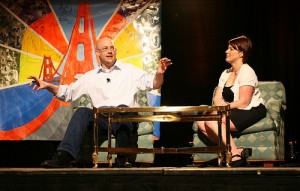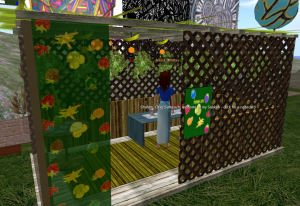
I’m at the Nonprofit Technology Network (NTEN) conference, commonly known as NTC (or this year, 09NTC). It is a phenomenal gathering of the brightest nonprofit folks who are using or interested in technology, from databases to mobile and everything in between.
Today’s keynote was Clay Shirky, author of Here Comes Everybody: The Power of Organizing Without Organizations. His summary of the book in 5 words: Coordinated Action Just Got Easier. (And the footnote: thus organizations have lost their monopoly on coordinating action, and therefore their role is changing.) His entertaining and enlighting presentations (see many on YouTube) include many examples of the implications of social media and the opportunities it presents.

One of the things I love most about his work are the illustrations of the major paradigm shift underway. I find that beyond the tactical education about this or that tool, this understanding is key to the health and success of the Jewish community. Today he gave the analogy of John Fitch’s invention of the steamboat. When Fitch started, he took the boat as we all knew it — powered by men rowing oars — and added a steam engine. Not particularly successful. Using the old model and adding steam was not a recipe for success. However, when he changed the model, the steam engine added tremendous value.
The same is true of our organizations. Take the same top-down organization and add technology. Doesn’t work. Working in alignment with the new, and still evolving marketplace requires rethinking our models and questioning some very basic assumptions about marketing, communication, education, and community building.
Thanks to Chad Norman for the Clay Shirky and Holly Ross (Exec Dir of NTEN) photo, and for the quotes below from his talk:
“The loss of control you fear is already in the past.”
“We’re not good at thinking fast. We are good at feeling fast.”
“Tools don’t get socially interesting until they get technologically boring.”
“Once one person solves the problem once, the problem stays solved for everybody.”
“The intention of users has more impact than the intention of the designers.”
“Each of us is simultaneously an individual person and a global publisher.”
“Start small and good, then make it bigger.”
“We spend more time figuring out whether something is a good idea than we would have just trying it.”
“Don’t hire consultants. Hire your own 23-year-olds.”
[It doesn’t work to] “Just take our organization and add some Internet.”
“It’s not just about delivering content to members, it’s about the convening power to help members discover each other.”
“Fail informatively – Fail like crazy.”
Want to hear what’s going on at 09NTC? Check out the Twitter Stream #09NTC.
How are you re-aligning your work? What are you noticing? What’s working, or not?





